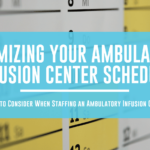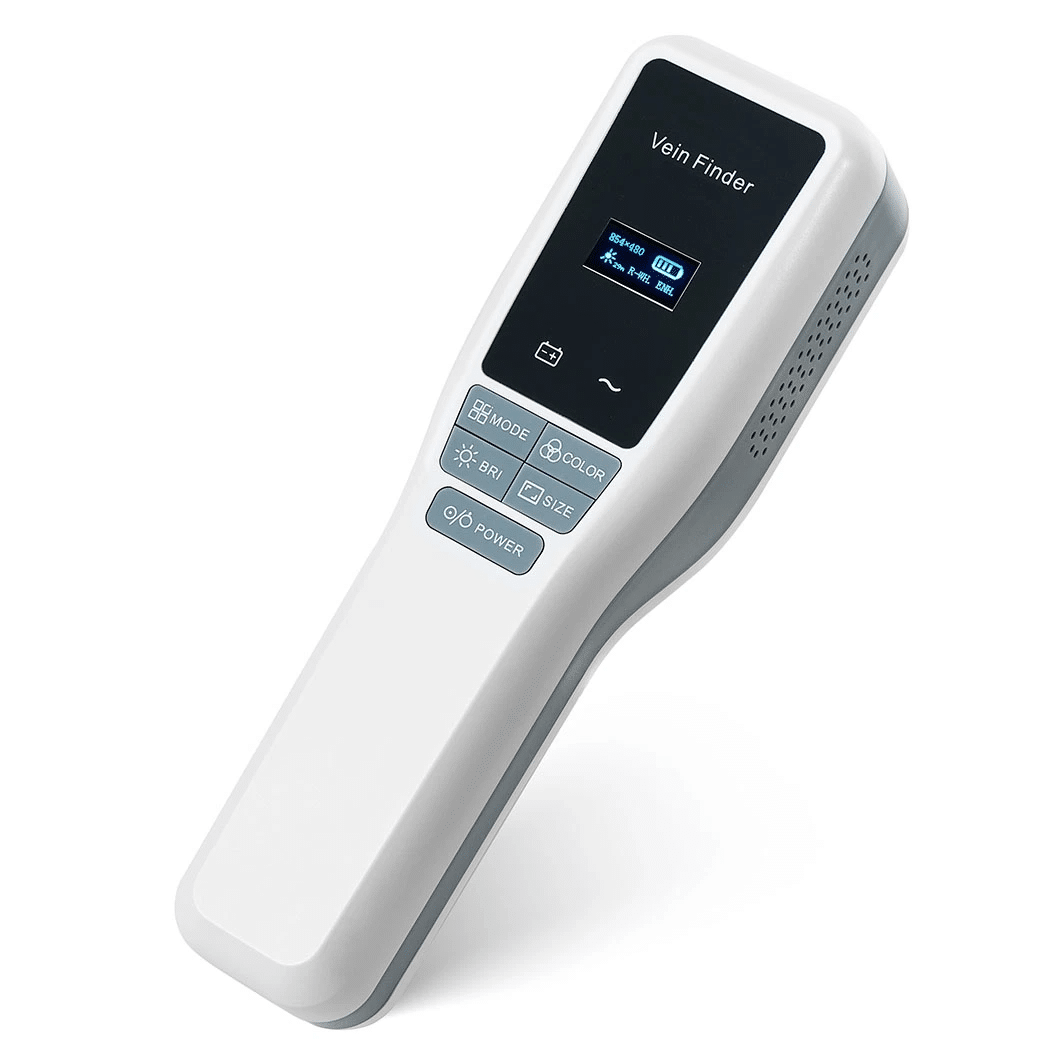When it comes to utilizing vein visualization devices in independent infusion centers picking the right device for your needs is key. While not all ambulatory infusion centers utilize vein visualization devices, if your center is looking to optimize patient experience, reduce complications, and increase efficiency you may want to consider implementing vein visualization devices. To find out why, let’s explore a situation that happened to me as a new infusion nurse.
While completing my initial nursing education vascular access was not an area in which I found much interest. As my education continued into floor nursing, becoming proficient at starting IV’s was a must. The initial IV training consisted of lectures and slides indicating the cost and detriment of missed attempts, the harm we would be causing the patient with multiple attempts, and the breach of trust we would incur in the patient population for exemplifying poor skills. I was petrified at the thought of not being efficient.
Inexperienced Hands: Insecure and Hands Quivering with Nervousness
One of the first IV’s I started was on a young man undergoing an elective surgery. I entered the room skittish, insecure and hands quivering with nervousness. As I prepared my workspace to perform this outlandish procedure, the patient turned on his Walkman (I know I am dating myself – if you don’t know, it’s like an iPod only with cassette tapes) and we both began listening to Billy Joel belt out his ever-famous song “Get it Right the First Time”.
As Mr. Joel puts it:
“Get it right the first time, that’s the main thing … Ooohoo ... I can’t afford to let it fail! You get it right the next time that’s not the same thing … Ohooho ... Gonna have to make the first time last … La la la la!”
Oh the humor in life! Apparently, Billy Joel had some issues getting stuck too!
Vascular Access Is Hard: Let’s Help Make It Easier
Vascular access is hard! It is especially hard in the independent infusion center arena. Whereas hospitals have a plethora of skills, services, and devices to call upon – independent centers are
limited. Or are they? In my last article I discussed vascular access services. Both outsourcing vascular access services or growing your own vascular access specialists are viable options. Another option to optimize patient experience, reduce complications, and increase efficiency is to utilize vein visualization devices. Devices that use technology such as transillumination, infrared, and ultrasound are available. These two methods are noted by the Infusion Nurses Society in their Standards of Care, item #22. The Standards note: “Vascular visualization technology is employed to increase insertion success of the most appropriate, least invasive vascular access device (VAD), minimizing the need to escalate to an unnecessary, more invasive device and to reduce insertion-related complications” (Ins, 2021, p. 63).
- Transillumination – Also known as reflective light therapy, this option uses real-time technology, is lightweight and portable, identifies superficial veins, is useful with darker skin, and provides the ability to assess venous valves.
- IR/NIR (infrared/near infrared technology – analyzes the skin and projects the received image back on the skin, making the veins appear as black lines, creating a map to guide vessel identification and cannulation.(Moureau, n.d.)
- Ultrasound – Provides visualization of vessels including vessel size, depth, and anatomical structure. In addition to valves and bifurcations, ultrasound demonstrates real-time visualization of the needle into the vessel, provides a clear view from skin level to deeper 0-6cm, is useful with darker skin and obese patients to locate all available veins, visualizes transverse and longitudinal views, and identifies vein patency and blood flow (Moureau, n.d.)(Thompson et al., 2019).
In summation, with respect to ultrasound devices versus transilluminate and infrared devices, both were found to be successful in enhancing vascular access with the use of ultrasound far more superior in efficiency. (Moureau, n.d., slide 24)
When evaluating devices, this author found ultrasound to be the superior device for vein visualization at depth levels of 0.5 to approximately 4cm, blood flow evaluation, identification of anatomical structures as well as vein anomalies. Sadly, ultrasound imaging does have its drawbacks. It is pricey compared to transillumination and requires a learning curve where time and experience is needed for proficiency. On the positive side, these tasks are not difficult to achieve through mentoring or formal education with various learning platforms. In addition, newer technologies are making ultrasound technology for vascular access more affordable and easier to acquire. The literature confirms utilizing a device brings higher success, increases patient satisfaction, and reduces costs with the efficacy of a “one and done” approach. Deciding on a vascular access device may always be a confusing path, but as technology improves there will be clear winners over the competition.
Author References & Citations
- Infusion Therapy Standards of Practice 2021 (8th ed.).
- Infusion Nurses Society. Moureau, N. (n.d.). Ins and Outs of Vein Visualization: Applying Vessel Health and Preservation.
- Infusion Nurses Society. INS1.org
- The Billy Joel / Elton John Concert Archive. (2015, July 13). Billy Joel: Get It RIght the First Time [Live] [Video] YouTube https://youtu.be/3sTRmjnspDE
About the Author
Tara M. Wright DNP-s, BSN, RN is a guest contributor for NICA. Ms. Wright is presently a doctoral student of Nursing Practice at Clemson University in South Carolina. As a seasoned vascular access/infusion therapy nurse of 22 years, she has worked in outpatient/inpatient settings, home health, and with subcontracted vascular access entities. Tara continues as an educator for PICC Excellence and Clemson University in addition to her proactive efforts in Alternative health awareness. She has earned ONS, AVA-BC, and IV Nutrient therapy certifications in addition to establishing her own IV Nutrient therapy clinic and continues to be an active member or INS, AVA, and NICA. You can engage with them on LinkedIn, here: www.linkedin.com/in/tara-wright-dnp-s-bsn-rn-2868a6236
About the National Infusion Center Association
NICA is dedicated to ensuring that the nation’s infusion centers remain a safe, more efficient, and more cost-effective alternative to hospital settings for consistent, high-quality care.
Infusion providers have a vested interest in the sustainability of the infusion delivery channel and its ability to serve vulnerable patient populations. NICA Provider Members have a voice and a seat at the table to inform NICA’s activities and the opportunity to remain highly engaged in the expansion and optimization of the infusion industry. Learn more about becoming a NICA member, here: https://infusioncenter.org/member-partner-page





